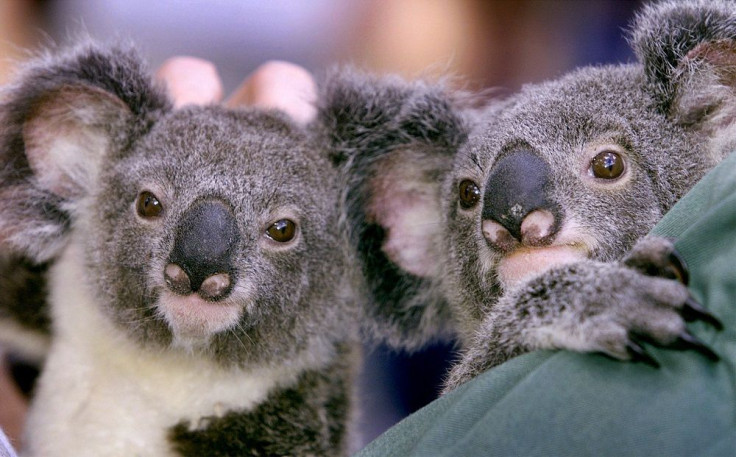Technology helps preserve wildlife as koalas face possible extinction

News of koala extinction resurfaced after ABC News reported new data that confirms a 20-year-long catastrophic population crash on one of the biggest and most important koala population in Queensland’s Koala Coast and Pine Rivers regions. The reports found that more than 80 percent of the koala population in Kohala Coast has disappeared, while Pine Rivers, accounted more than 50 percent of koalas to have disappeared, since 1996.
University of Queensland Associate Professor Jonathan Rhodes blamed various factors that may have caused this, including the destruction of their natural habitat, disease, and even animal attacks. The alarming number of disappearance forced Rhodes to seek help from authorities in the regional areas to save the animals while they still have the chance. In response to this plea, State Environment Minister Steven Miles called to review policies that will help save koalas.
World Wildlife Fund spokesperson Martin Taylor seconded the plea and even said that figures were horrifying. "The koalas are disappearing as we speak. We need not just more analysis — we need stronger laws to stop the bulldozers,” Taylor said.
About two years ago, The Guardian reported that the federal government published new guidelines that will help reduce the impact of urbanisation on koalas. These guidelines include certain measures such as building underpasses or bridges across highways to prevent koalas being hit by motorists.
However, conservationists warned that these measures are not enough to save the early extinction of koalas. More so, even if there were recovery plans underway, it may be too late.
“The koala is on its way to extinction. We need a national recovery plan that would mean developers have to change their behavior. And yet there’s no sign of it. They’ve got rid of so many people in the department I’m not even sure there’s anyone left who can do it,” said Deborah Tabart, chief executive of the Australian Koala Foundation.
Beyond government policies
Fast forward to a year, advancements in technology saw signs of hope as Australian researchers managed to locate endangered koalas with the help of flying cameras. A 2015 report from the Voice of America cited that drones equipped with infrared cameras have been used to monitor wildlife in their natural habitat. Researchers explained that koalas are hard to track in their natural habitat, but with the help of these drones, they could easily spot them and be able to develop plans for their conservation.
Getting through with the project was not easy, narrates Queensland Institute of Technology technician Gavin Broadbent. The concept of using drones equipped with cameras to conduct a survey of wildlife was an unfamiliar territory. However, when images started coming in, that’s when they were convinced that this could actually work.
“But when we saw the images come through, we saw the koalas were very distinct compared to the trees and the environment. So we thought, yes this is absolutely a proof of concept that could work,” Broadbent said.
Images from the drone are transmitted to a computer that clearly shows the animal’s location, even from about 80 metres away. However, researchers said that 20 meters were the ideal distance where they could get clear images without disturbing the animal.
The Australian Wildlife Conservancy (AWC) in collaboration with Google Earth has been using the same idea of mapping wildlife . The project has been introduced to AWC some four years ago. The project consisted of a virtual tour of AWC sanctuaries to monitor wildlife extinctions. Google Earth also helped in the second part where a visualisation of wildfires and its effects to ecosystem was developed.
Bringing back life to science through tech
Technological innovations such as drones are put to good use in terms of helping the environment achieve its balance. The internet, another tech innovation is put to good use just as the AWC worked with drones to map wildlife locations, including those of the koalas. The Australian government, through the Threatened Species Commissioner , also aims to bring national focus to the conservation efforts of the government regarding wildlife, flora and fauna extinction.
The same technology used in drones—receiving and transmitting signals—is also evident in a network extender device from 5BARz International . The radiofrequency-based, single unit, plug-and-play technology enhances weak indoor signal, within 4,000 square feet. The various efforts the government undertakes to combat wildlife extinction also aims to put a stop to dead spots and weak mobile signals to set up a more extensive network of information and data highway for research.
Nature continues to amaze people with its beauty and wonder, sadly there are instances that these people also become the very reason of its destruction. Luckily, there are more people concerned about nature and animals’ well-being that they continue to help preserve these wonderful creations with the help of technology. Admittedly, the internet made communication easy. Today, even in the most remote location, internet connectivity has become possible. More than the call to improve policies, civilians, lawmakers and organisations should realise that plans turned into action produce results.





















